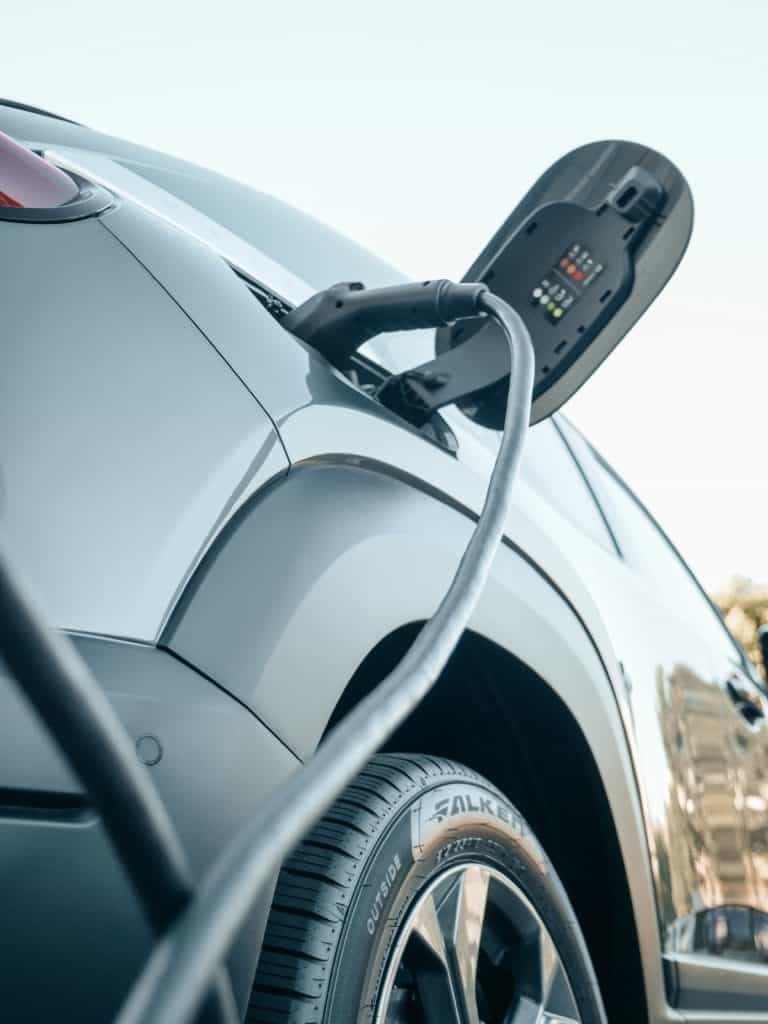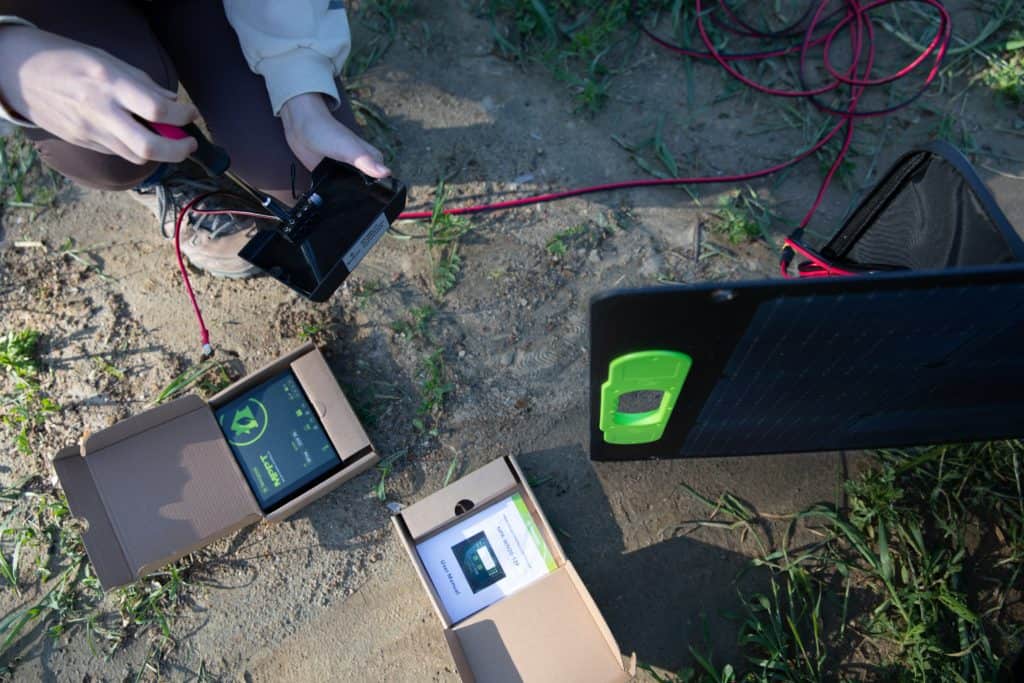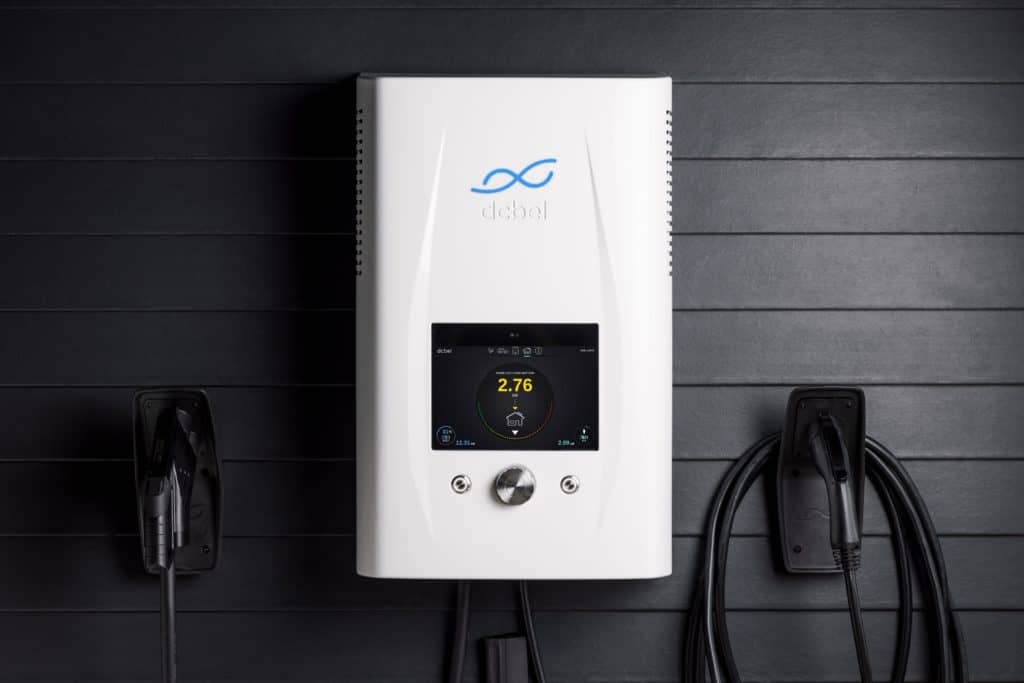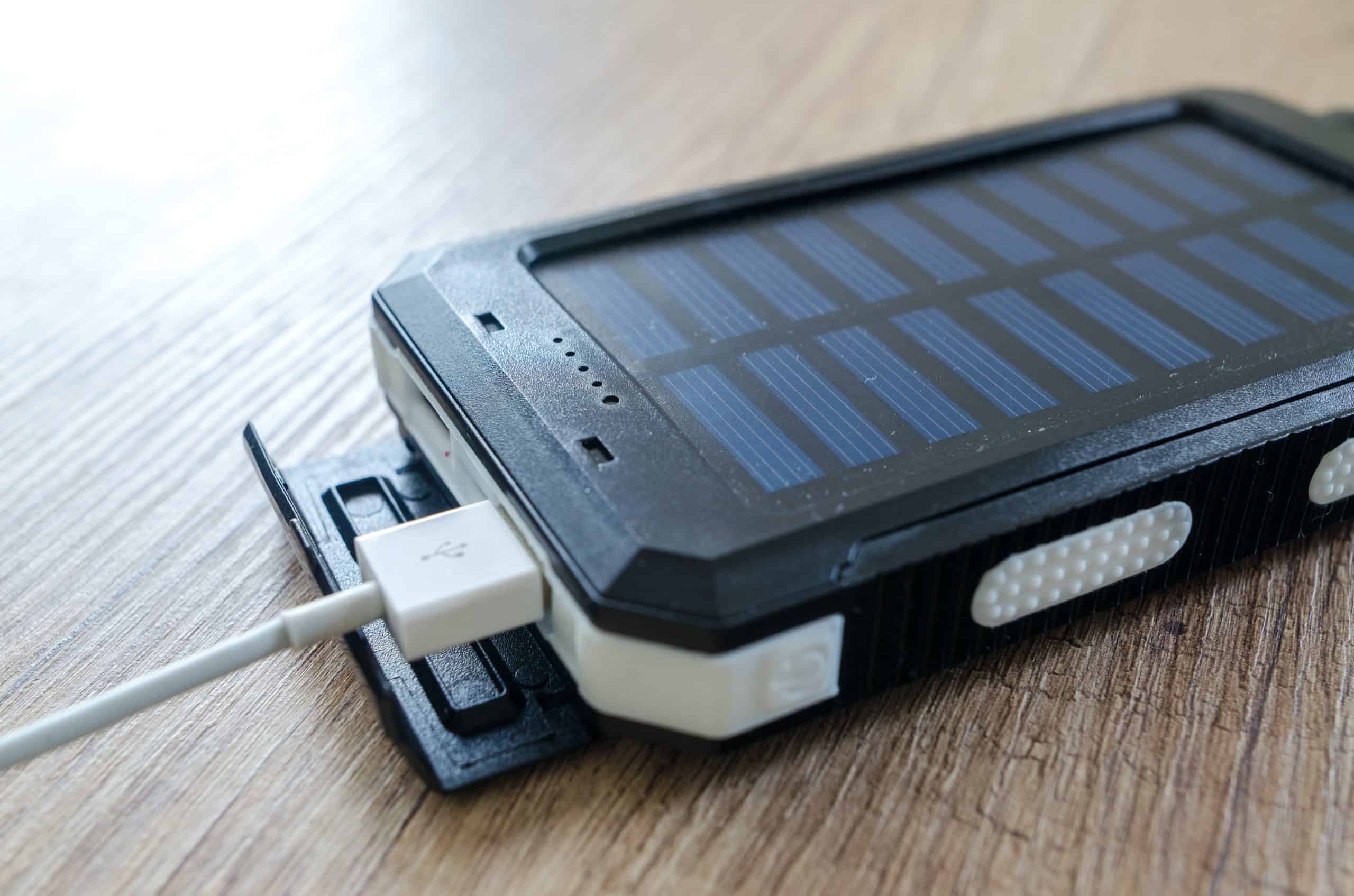Solar battery chargers: A comprehensive review & guide
As the world shifts towards sustainable energy solutions, solar battery chargers have emerged as a popular choice for both personal and professional use.
These modern devices use the renewable energy of the sun to power up a variety of batteries, creating an eco-friendly option in comparison with traditional charging techniques.
In this comprehensive guide, we will delve into understanding how solar battery chargers work and their applications in different sectors.
We’ll discuss how to calculate your energy requirements based on device usage.
We’ ll also discuss the importance of choosing appropriate components such as charge controllers and inverters for optimal system performance.
Furthermore, we will explore various types of solar battery chargers specifically designed for automotive and marine environments.
Finally, we’ll highlight the benefits of using a solar panel battery charger in terms of longevity and sustainability.
What is a solar battery charger
A solar battery charger is a device that utilises solar energy to charge a battery pack, which can be used later for recharging purposes.
They are a practical, green way of using solar power to energise different electronic gadgets.
Solar battery chargers can be used to provide power for portable items such as phones and tablets.
They can also be used for bigger appliances like TVs, electric cars, recreational vehicles (RVs) and even boats.
They typically consist of portable solar panels combined with battery storage units, providing long-lasting power while on the move.
How solar battery chargers work
To understand how solar chargers work, we first need to know a little bit about solar energy. The sun emits light and heat in the form of photons.
These photons are then captured by photovoltaic cells (also known as solar panels). The solar panels will in turn act to convert the sunlight into direct current (DC) electricity.
Solar chargers work by using solar panels to absorb sunlight and convert it into electricity. The electricity is then stored in solar batteries for later use.
The solar panels consist of multiple solar cells that work together to capture the energy from the sun.
Types and applications
Solar power battery chargers come in various sizes and types, depending on the usage.
Many households, for instance, rely on solar power batteries during a power outage for the uninterrupted functioning of their daily tasks.
In addition, it is possible to build large battery tanks for storing solar energy by connecting multiple batteries using wires. This energy system is not only reliable but also cost-effective.

They can be easily transported to different locations and taken along on vacations or extended trips.
There’s no need to carry extra batteries as most gadgets and appliances can be charged using solar batteries.
Application in daily living
- Portable charger: For those on-the-go, portable solar chargers allow you to keep your devices (mobile phones, tablets, laptop computers, hand-held power banks, etc) charged without relying on wall outlets or carrying bulky power banks.
- Car battery maintenance: Using a trickle charger, for instance, solar panels can help maintain your vehicle’s battery health when not in use or during long-term storage.
- Camping & outdoor activities: Campsites often lack access to electricity; however, with a solar panel battery charger, you can still enjoy modern conveniences while being off-grid.
- Rural living & remote locations: In areas where the grid connection is unavailable or unreliable, using solar panels provides an independent power source.
In addition to these applications, solar panel battery chargers are also being integrated into various products. This includes things like backpacks, lanterns, and even clothing.
This demonstrates the versatility and adaptability of this sustainable technology in our daily lives.
Understanding solar panel battery chargers is an essential step in transitioning to a more sustainable lifestyle.
Once you have the necessary information and resources, ascertaining your energy needs can be less daunting.
Automotive application-specific chargers
Traditional cars
The anxiety of dealing with a car battery that is likely to fail is something every car owner has faced.
Simple actions like forgetting to turn off the headlights, leaving the radio on or even using windshield wipers can lead to a reduced lifespan of the battery, and replacing it can cost a lot at an auto shop.
Hence, many people are now opting for a charger that maintains the battery’s voltage level and extends its life expectancy.
Car battery chargers can be expensive, with a standard 12-volt charger costing around £250 and needing frequent recharging or replacement.
However, solar-powered car battery chargers are much more affordable, typically priced between £20 and £40.
There are two main types of automotive solar battery chargers: trickle chargers and portable charger kits.
- Trickle chargers: These small solar panels are designed to slowly charge a car’s battery by providing a continuous flow of energy at a low rate. Trickle chargers help prevent the natural discharge that occurs over time, keeping your vehicle ready for use even during extended periods without driving.
- Portable charger kits: Portable solar charger kits usually consist of foldable or compact solar panels paired with a built-in charge controller and necessary cables. Portable kits featuring foldable or compact solar panels, a built-in charge controller and requisite cables are not only capable of recharging car batteries but can also serve as a source of emergency power for other electronic gadgets such as phones, tablets or laptops.
Recreational vehicles (RVs)
Solar battery chargers are becoming increasingly popular among those who embark on long RV trips across the country.
This is because car battery failures can be quite inconvenient during such journeys.
The consistent hours of sunlight available during a cross-country road trip make it easy to keep solar battery chargers powered up.

For RVs, trickle chargers that slowly recharge the vehicle’s internal battery are usually the best option. This is because they can reduce the risk of overloading the battery.
Solar chargers for electric vehicles (EVs)
The rise in the use of EVs has spawned the production of tailored solar charging solutions.
EV owners can opt for standalone solar carports or integrate rooftop-mounted residential photovoltaic (PV) systems with home-based EV charging stations.

Solar chargers may not provide enough power to fully charge an EV daily. However, using solar energy can help in reducing reliance on grid electricity and contribute towards a more sustainable transportation future.
Marine environment-friendly application
In marine settings like boats and yachts, where access to grid electricity is limited or non-existent, solar battery chargers play a crucial role in providing clean and sustainable energy.
There are two primary types of marine solar chargers: fixed-mount panels and flexible solar panels.
- Fixed-mount panels: These rigid solar panels can be mounted on various surfaces, such as boat decks or rooftops. They usually come with aluminium frames for added durability and support.
- Flexible solar panels: These are lightweight and bendable solar panels. They can conform to curved surfaces like boat hulls or biminis. Although they may have slightly lower efficiency compared to their rigid counterparts, their adaptability makes them an excellent choice where space is limited.
Solar panel battery chargers are a sustainable and environmentally friendly way to harness renewable solar energy for everyday use. They can be used in various applications such as portable charging, maintaining car batteries, camping, rural living, remote locations and even electric vehicles. Solar panel battery chargers offer the versatility and adaptability of this sustainable technology in our daily lives.
Calculating your energy requirements
To effectively utilise a solar panel battery charger, it’s essential to understand the amount of energy required for your specific needs.
A common rule-of-thumb is that a solar panel can produce about 0.33AH per hour of direct sunlight. However, overestimating power requirements is always wise.
Estimating wattage levels based on usage
The first step in working out how much power you need from your solar battery chargers is by estimating the wattage levels.
For example, if you plan to charge small gadgets (phones and tablets), a portable charger with 5-10 watts may suffice.

However, larger appliances such as televisions or even electric vehicles will require more powerful solar panels.
To determine the total watt-hours needed daily, multiply each device’s wattage by its usage time in hours and add all these values together.
Add up the wattage of each device multiplied by its usage time. This will then give you a general idea of your daily energy needs.
This information will help guide you in selecting an appropriate-sized solar energy system.
Solar array sizing
It is important to accurately calculate your energy requirements before selecting the right array and battery reserves for your system.
Since weather conditions and other factors can affect solar panels’ efficiency, it’s recommended to oversize your array by at least 25%.
This ensures that even during cloudy days or reduced sunlight hours, there will still be enough power generated to meet your needs.
Opting for batteries with higher Ah reserves can help maintain a consistent power supply during periods of low solar output.
How to size your solar array
By accurately calculating your energy requirements and taking the necessary precautions, you’ll harness the full potential of solar panels.
A properly sized solar array is crucial because it ensures that your system generates enough electricity without overloading.
You can also be sure that components like batteries or inverters will not be underutilised. Here are some steps to help size your solar array:
- Determine daily energy consumption: Add up watt-hour calculations from all devices as mentioned earlier.
- Select a suitable location: Choose an area with maximum sunlight exposure throughout the year – south-facing surfaces work best in most cases (NREL’s Solar Maps can help).
- Multiply the wattage of each solar panel by the daily peak sun hours in your location to calculate its output. This information is available from sources like PVWatts Calculator.
- Size your array: Divide total daily energy consumption (Wh) by calculated solar panel output to determine how many panels you need.
Remember to bear in mind that factors such as shading, dirt accumulation on panels, and temperature fluctuations may affect system performance. Therefore, it’s a good idea to add a buffer of around 20-25% when sizing your array.
Battery selection
To ensure optimal performance and avoid underestimating your power needs when designing your solar panel battery charger setup, consider investing in batteries with higher Amp/Hr reserves.
Small batteries are ideal since they have life expectancies ranging between three and twenty-five years.
Factors affecting battery lifespan
- Temperature: Extreme temperatures can significantly impact a battery’s lifespan. High temperatures can cause increased self-discharge rates, while low temperatures may reduce the overall capacity of the battery. It is essential to keep your batteries in a spot that allows for good air circulation and has stable temperatures.
- Cycling: The number of charge/discharge cycles also affects a battery’s lifespan. Frequent cycling leads to faster degradation; hence it is crucial to select a high-quality deep-cycle battery designed for solar applications.
- Maintenance: Proper maintenance plays an essential role in prolonging the life expectancy of any battery type (Battery University). Regularly inspect connections, clean terminals, and check electrolyte levels (for flooded lead-acid batteries) to maintain optimum performance over time.
Tips for choosing appropriate batteries
- Battery type: There are various types of rechargeable batteries available on the market today: Lead-Acid (flooded or sealed), Lithium-Ion (Li-ion), Nickel-Cadmium (NiCd), and Nickel-Metal Hydride (NiMH). Research is key to determining which type of rechargeable battery offers the best performance for your specific needs. For solar applications, deep-cycle lead-acid batteries are the most popular choice due to their affordability and durability.
- Capacity: The battery capacity is measured in Amp-hours (Ah) or Watt-hours (Wh), indicating how much energy can be stored within the battery. To calculate the required capacity for your solar panel battery charger system, you need first to determine your daily power consumption (AltE Store). Then choose a battery with enough reserve capacity to meet those demands while accounting for factors such as temperature fluctuations and ageing.
- Battery size: When selecting a suitable size for your batteries, consider both physical dimensions and weight. Ensure that there is adequate space available at the installation site and account for any potential restrictions on transportation or lifting equipment needed during installation.
- Manufacturer reputation: Finally, always opt for reputable manufacturers known for producing high-quality products backed by solid warranties. This will help ensure long-lasting performance from your chosen batteries while minimising potential issues down the line.
You may also require a charge controller. These are essential for any solar systems to guard the battery and the device being powered from overcharging or draining.
To effectively use a solar panel battery charger, calculate your energy requirements and estimate wattage levels based on device usage. Oversizing the solar array by 25% and using batteries with higher Amp/Hr reserves can help maintain a consistent power supply during periods of low solar output.
Using charge controllers
Charge controllers are essential for any solar power setup, as they guard the battery against too much charging or discharging.
They basically act as an on/off switch between the panels and batteries being charged or powered directly from them.

This prevents overcharging or discharging issues that could damage both panel and battery components.
How charge controllers work
A charge controller works by monitoring the voltage levels of your battery pack and regulating the amount of energy flowing to it from the solar panel.
When your battery reaches its maximum capacity, the charge controller will automatically stop any further charging to prevent overcharging.
Similarly, when you’re using power from your battery pack for various devices, a charge controller ensures that it doesn’t get discharged too much by cutting off the power supply once a certain minimum voltage level is reached.
By preventing over-discharge, not only is the life of your batteries extended but also their efficiency is maintained.
Some advanced models come with features like Maximum Power Point Tracking (MPPT) technology.
This can help optimise overall system performance by ensuring optimal energy transfer between solar panels and batteries at all times.
Selecting the right charge controller
To choose an appropriate charge controller for your needs, consider factors such as:
- Type: There are two main types – Pulse Width Modulation (PWM) controllers which are more affordable but less efficient compared to MPPT controllers offer better efficiency but come at a higher cost.
- Battery voltage: Ensure compatibility with your chosen battery’s voltage requirements. Common options include 12V or 24V systems although other configurations may be available.
- Current rating: The controller’s current rating should match or exceed the maximum amperage your solar panels can produce. This ensures that your charge controller can handle the power generated by your solar array.
- Battery chemistry support: Some advanced chargers support multiple types of batteries like lead-acid or lithium-ion. Make sure your chosen controller is compatible with the specific battery chemistry you plan to use.
- Additional features: Look for features like temperature compensation, which adjusts charging rates based on battery temperature, and load control options to help manage energy consumption more effectively.
In summary, a solar panel battery charger system with capacities greater than 5 watts requires a charge controller as an essential component.
Ensure to select the right type and consider factors such as voltage compatibility and additional features. In this way, you’ll ensure optimal performance.
This will also protect both your batteries and solar panels from potential damage due to overcharging or discharging issues.
A charge controller is an essential component for solar panel battery chargers with capacities greater than 5 watts, as it prevents overcharging or discharging issues. It works by monitoring the voltage levels of your battery pack and regulating the amount of energy flowing to it from the solar panel, ensuring optimal performance while protecting both your batteries and solar panels.
Using inverters
Understanding how to convert DC power into AC power with inverters is essential for selecting an appropriate solar charger.
In many cases, the devices and appliances we use daily require alternating current (AC) power instead of direct current (DC) power generated by solar panels.
An inverter is required to make the conversion from DC power generated by solar panels to AC power for use.
This section will discuss the role of inverters and how to select one based on your specific energy requirements.
Understanding the role of inverters
An inverter’s primary function is to convert the DC electricity produced by solar panels into usable AC electricity.
They come in various sizes and capacities. Some are designed for small-scale applications like portable chargers while others are built for larger systems such as residential installations.
How to select an appropriate inverter
- Determine your wattage needs: Start by calculating the total wattage required for all devices that will be powered using your solar panel battery charger. Keep in mind that it’s better to overestimate than underestimate when sizing an inverter.
- Pure sine wave vs modified sine wave: Pure sine wave inverters provide a smoother output similar to what you’d get from a utility grid, making them ideal for sensitive electronics. Modified sine wave inverters are less expensive but may not work well with certain types of equipment; consult device manuals before choosing this option.
- Voltage compatibility: Ensure that both input voltage from your solar array or battery pack and output voltage match up with any connected devices. If you are using a 12-volt battery and require an output of 110V AC, select an inverter that can accomplish the transformation.
It’s essential to note that inverters themselves consume energy during the conversion process.
An inverter of 12 volts, for example, necessitates 10 amps DC to generate 100 watts outturn; whereas one with 24 volts requires merely half that (5 amps).
Therefore, selecting an efficient inverter is crucial to minimise overall system losses and maximise your solar panel battery charger’s effectiveness.

Inverter size
When it comes to solar panel battery chargers, there are several options available on the market. Solar battery chargers and trickle chargers are all viable choices for charging your car’s battery or powering small devices.
However, if you’re looking to power larger appliances or EVs, you’ll need a more robust solar system with an appropriate inverter.
Overall, incorporating an inverter into your solar energy system is a crucial step in making the most of your solar panels.
By selecting a suitable inverter based on your energy requirements, you can ensure that your solar panel battery charger is as efficient and effective as possible.
Understanding the life expectancy of a solar battery charger is essential. This can help in making an informed decision when selecting one for yourself.
An inverter is required to convert DC electricity produced by solar panels into usable AC electricity. It’s important to select an appropriate inverter based on your energy requirements and consider factors such as wattage needs, voltage compatibility, and the type of wave output. An efficient inverter will minimise system losses and maximise the effectiveness of your solar panel battery charger.
Life expectancy
Solar-powered battery chargers boast a longer operational life than conventional charging techniques. Solar panel battery chargers boast impressive life expectancies ranging from three years up to two decades.
Notwithstanding, their durability would also depend on factors like usage patterns and maintenance practices.
Given the wide variety of charger options available today, there is likely a solution suitable for virtually any scenario imaginable.
Some of the benefits that you can derive from opting for a solar-powered battery are:
- Being Eco-friendly: Using solar power reduces carbon emissions associated with conventional electricity generation methods.
- Maintenance-free: Solar panels require minimal upkeep due to their lack of moving parts; occasional cleaning is usually sufficient.
- No operating costs: Once installed, solar battery chargers generate free energy without ongoing expenses other than potential replacement components (e.g., batteries).
Making the right choice
Selecting an appropriate solar charger involves evaluating your specific energy requirements. This can be considered alongside various product features offered by different models currently available on the market.
Here are some key tips when shopping around:
- Power output: Ensure the charger’s wattage is sufficient to meet your devices’ energy demands. For instance, a solar battery charger with a higher power output will be more suitable for charging electric vehicles than one designed for smaller gadgets like smartphones.
- Portability: If you plan on using the charger while travelling or in remote locations, opt for lightweight and compact models that are easy to transport and set up.
- Battery compatibility: Verify that the solar panel battery charger can work effectively with your specific type of battery (e.g., lead-acid, lithium-ion).
- Included accessories: Some chargers come bundled with useful extras such as charge controllers or inverters – these can prove invaluable when setting up more complex systems involving multiple components working together harmoniously.
In addition to these considerations, it’s essential to research various solar charger models and compare their features, efficiency rates, warranties, and customer reviews.
By doing so, you’ll ensure that your chosen solar panel battery charger aligns with both your current needs.
Ultimately, you will be acting to promote sustainability by harnessing renewable energy sources like sunlight effectively.
Solar panel battery chargers offer numerous benefits such as impressive life expectancies and eco-friendliness. Choosing the right solar charger involves considering factors such as energy requirements, intended applications, and budget constraints while researching various models to ensure alignment with current needs
Wrapping up!!!
In conclusion, solar power battery chargers offer an efficient way to utilise renewable energy while promoting sustainability efforts.
By selecting appropriate components based on your needs – including PV panel size, capacity, battery storage options, a suitable charge controller, and inverters – you can create customised solutions tailored specifically to your application needs.
FAQs
What to Know About Solar Battery Chargers
Solar battery chargers are devices that convert sunlight into electricity and store it in batteries for later use. They consist of solar panels, charge controllers, and inverters.
These chargers are eco-friendly, cost-effective, and useful for various applications such as automotive, marine environments, and off-grid living.
Do Solar Panel Battery Chargers Work?
Yes, solar panel battery chargers effectively harness the sun’s energy to produce electricity. The efficiency depends on factors like weather conditions, location, and latitude angle of the panels towards the sun.
With proper sizing and installation, solar panel systems can provide a reliable source of power for various applications.
How Is a Solar Panel Used to Charge a Battery?
A solar photovoltaic (PV) panel converts sunlight into direct current (DC) electricity. The electricity will then flow through a charge controller that regulates voltage levels before charging the connected batteries.
This stored energy can be utilised when needed by converting DC power back into alternating current (AC) using an inverter.






